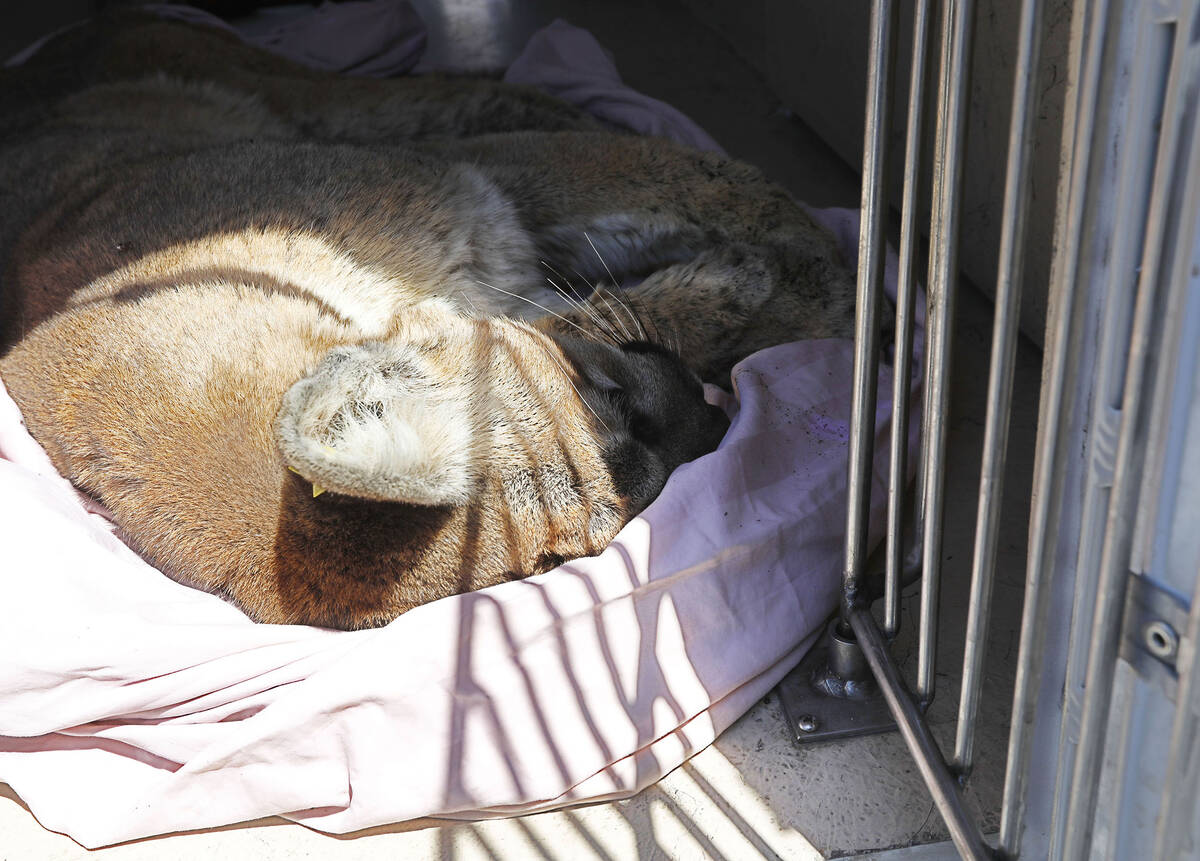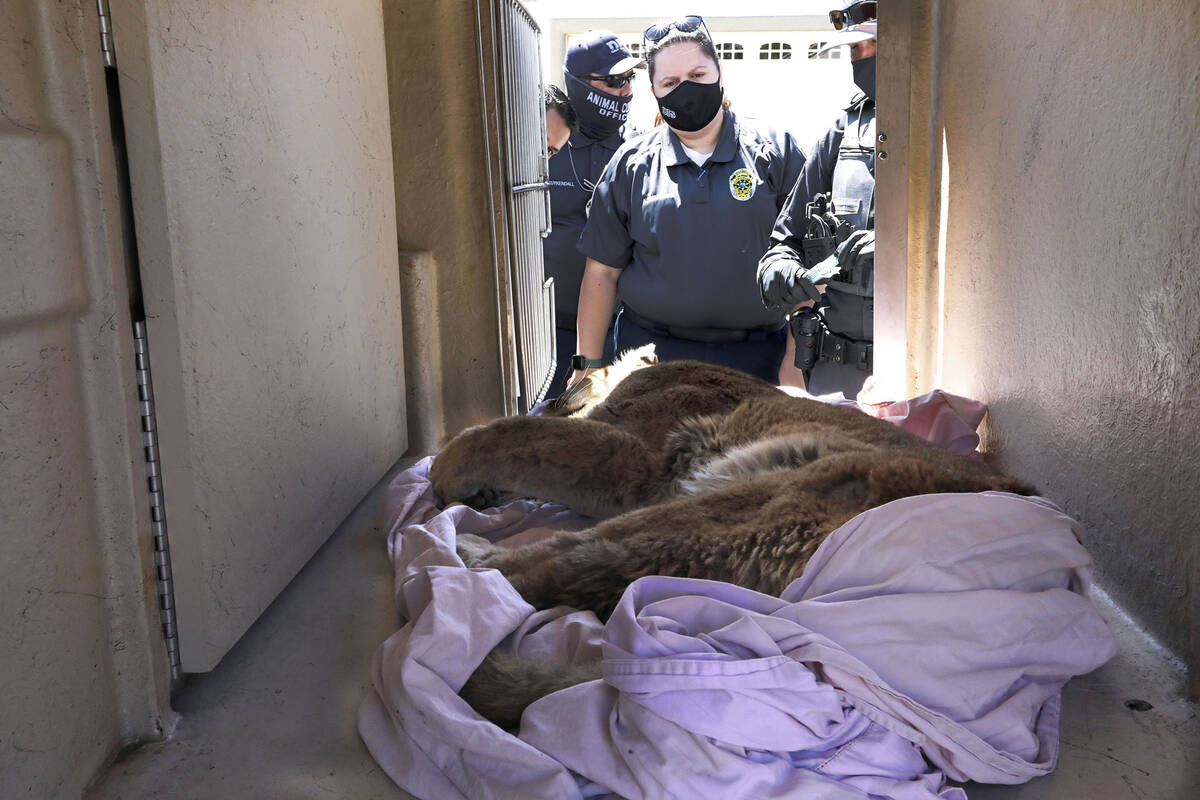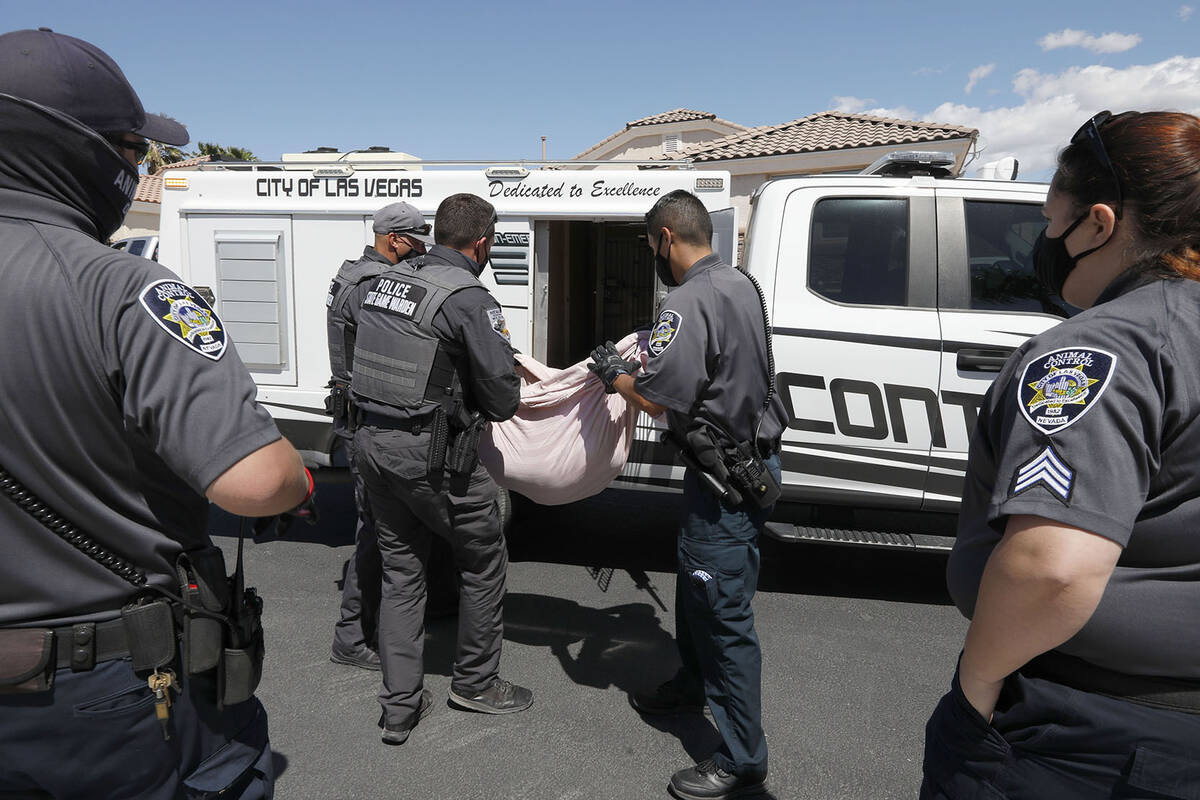As Las Vegas grows, so do calls from residents about wildlife run-ins
As the growth of the cities in the Las Vegas Valley push people and wild animals closer together, the Nevada Department of Wildlife is preparing and educating the public about how best to navigate wildlife encounters.
After the department foresaw five years ago that the growing city would bring more calls for service related to wildlife, they hired an official representative just to handle encounters between humans and wildlife, according to Doug Nielsen, regional conservation education supervisor for Nevada Department of Wildlife.
This position was initially a part-time job, but it quickly brought more calls to the department about wildlife.
From 2018 to 2019, the department saw a 657% increase in calls, from 161 calls in 2018 to 1,219 in 2019. The call volume increased so much that the job was allowed to expand to a full-time position in 2019.
Nielsen said it would be impossible for the department to send representatives out for every single call that it receives, so instead the first focus to limit negative encounters between people and wild animals is education.
Anybody who lives even somewhat close to an open tract of land or at the edge of town will likely come into contact with some kind of wildlife, he said.
“Realistically people who move to the Mojave Desert are going to interact with desert wildlife,” Nielsen said. “Our goal is to first educate people on how to interact with wildlife and help with understanding them to limit any unpleasant encounters.”
Learning to live together
The department normally only sends employees out to an animal call when the situation is actively dangerous to the surrounding community, according to Nielsen, like if a rattlesnake is in someone’s yard, or if a coyote is acting uncharacteristically aggressive.
According to data from the Nevada Department of Wildlife, the majority of urban wildlife calls in the last three years were related to birds. Nielsen said the most common reason for calls is from people worried about baby birds they find outside of their nest, especially during the spring.
If spotted, he suggested walking away from a baby bird out of the nest, saying that its parents being out of sight doesn’t mean they aren’t nearby.
The reason? Picking up baby animals and feeding wild animals ultimately creates more problems that weren’t there before. Picking up the babies could “condemn” them to death or a life without their parents, and feeding animals makes them too comfortable around people, leading to more problems from increased contact and comfortability with humans, according to Nielsen.
Helping wild animals in ways that hurt them is a bad habit that extends beyond birds.
“We really have to help people get over this urge to over-parent wild things,” Nielsen said.
Ultimately, residents like Judy Hendrickson don’t hold fear for the local wildlife near their home. Hendrickson lives in an Anthem neighborhood near the Sloan Canyon National Conservation Area and isn’t afraid of the coyotes she sees and hears in the desert behind her house.
“They serve a purpose out there in the ecosystem, and I don’t think they’re a danger to people,” Hendrickson said. “We all need to learn how to live with the wildlife around us.”
Contact Mark Credico at mcredico@reviewjournal.com. Follow him on Instagram @writermark2.




















